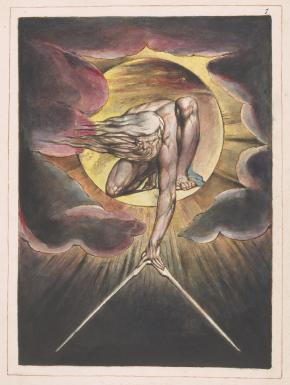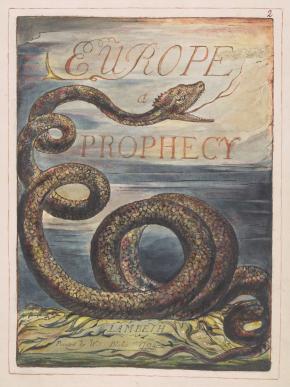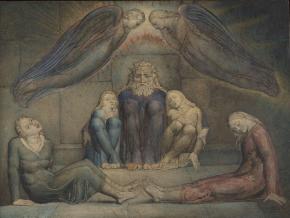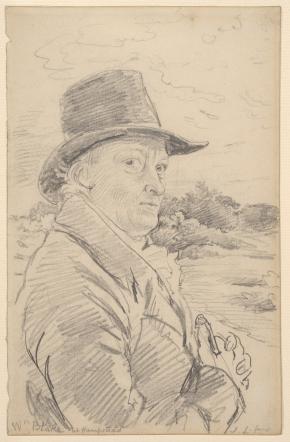WILLIAM BLAKE’S UNIVERSE
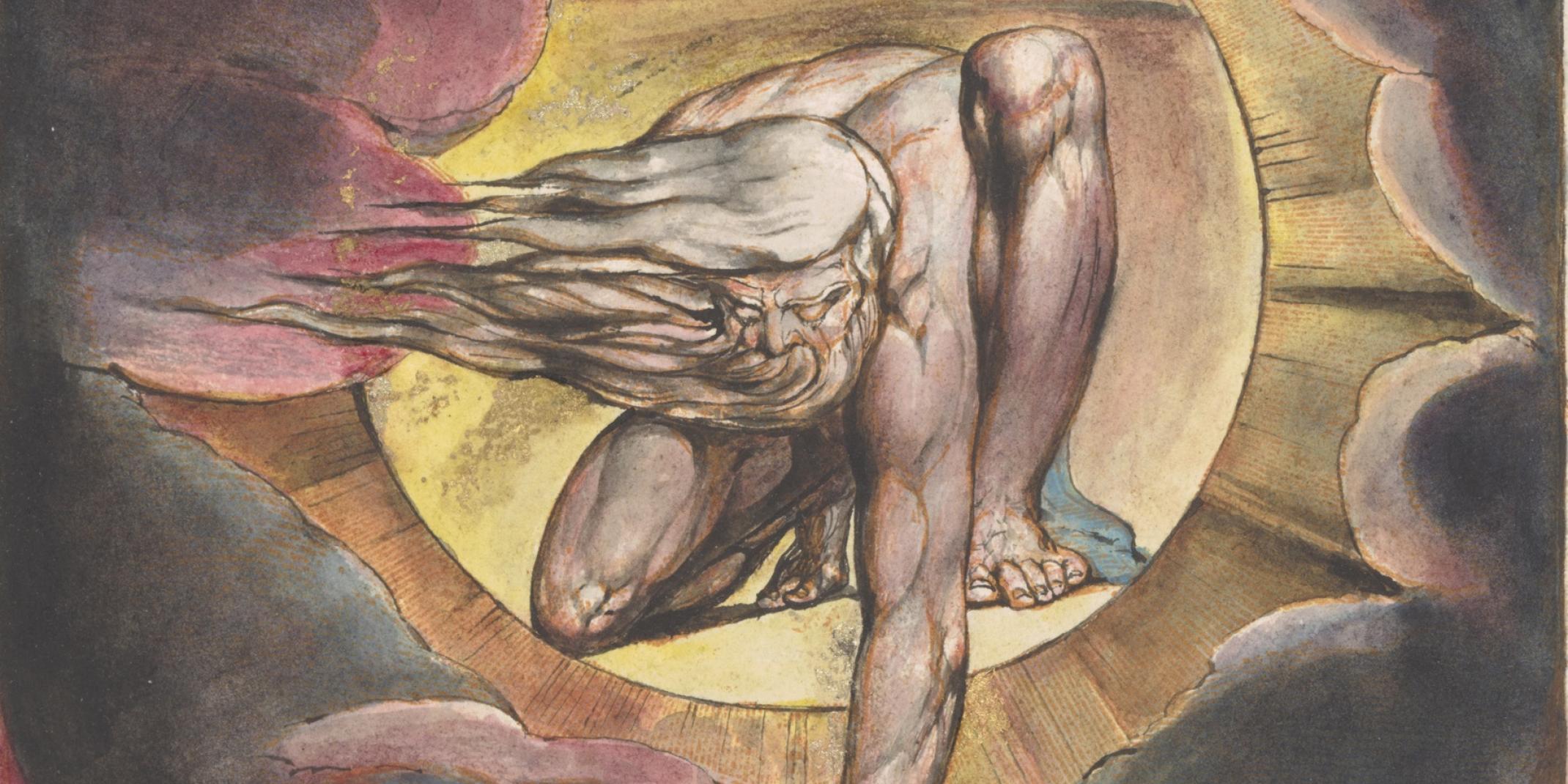
Press information
WILLIAM BLAKE’S UNIVERSE
The Hamburger Kunsthalle is devoting a large-scale exhibition to the astonishing oeuvre of the English draughtsman, printmaker and poet William Blake (1757– 1827). Blake worked in the years around 1800 against the backdrop of revolution and war in Europe, slavery in the European colonies, and oppression in his native Great Britain. His works express his critique of his world while at the same time conjuring a vision of universal redemption. Both his mystical imagery and grim literary works continue to be emulated even in today’s pop culture, even though his oeuvre is still little-known outside of England. The exhibition, featuring around 90 of Blake’s works on paper, sets the artist in the context of his European contemporaries, so that a total of 170 exhibits are on view. Even though Blake never left Great Britain, the show reveals him to have been a genuine European, giving it special pertinence for our present-day world. Nearly 50 years after the first William Blake show at the Hamburger Kunsthalle, curated by David Bindman in 1975, this is now the second museum exhibition ever of Blake’s work in Germany. It is at the same time the first public presenta-tion of the entire Blake collection of the Fitzwilliam Museum in Cambridge together with the bequest of the well-known Blake collector Geoffrey Keynes. In three chapters – Past, Present, Future – WILLIAM BLAKE’S UNIVERSE introduces definitive aspects of Blake’s art, from his training at the Royal Academy of Arts in London, to his engagement with antiquity and the Renaissance, and onward to his enthusiasm for the mystical imagery of the early modern period. The »universe« in the title refers to the worlds that Blake created in his visionary imagination but also to the larger intellectual and artistic cosmos to which his ideas and imagery belong. He was not personally acquainted with his German contemporaries Philipp Otto Runge (1777–1810) and Caspar David Friedrich (1774–1840), and perhaps had not even heard of them, but even during his lifetime, comparisons were already being drawn between his work and the German art of the period. Like Blake, both Runge and Friedrich were faced with the devastating political crises of their time and turned to visual art to rebuild the world. The Romantic artist Runge strove like Blake to visualise the spiritual renewal of humanity in a novel artistic form. Blake’s depictions of the soul’s journey from the fall of man to redemption are also compared to works by Friedrich and other contemporaries such as Blake’s younger compatriot Samuel Palmer (1805–1881), illustrating the artistic tensions that prevailed around 1800 between personal, national and universal liberation. Blake’s work can be set in a European context based both on his training at the Royal Academy of Arts, which was deeply indebted to antique and Italian models, and his engagement with the American and French Revolutions. Blake takes up these political and social upheavals in his major works America a Prophecy (1793–1821) and Europe a Prophecy (1794), in which he depicts the revolutions – with rich symbolism and interspersed with his own mythology – as struggles between the forces of freedom and oppression. The conflict is embodied by mythical figures such as »Orc«, who represents the rebellious spirit, and »Urizen«, who stands for the repressive system. Blake illustrated his texts with remarkable images depicting his visionary scenes. The elaborately hand-coloured prints were made possible by a unique printing technique invented by Blake himself – relief engraving. The show is a collaborative project between the Hamburger Kunsthalle and the Fitzwilliam Museum, University of Cambridge. It picks up the thread of the cycle »Art around 1800« conceived by former Kunsthalle director Werner Hofmann. An article on William Blake, written by the English journalist Henry Crabb Robinson, already appeared in Hamburg in 1811 in the critical journal »Vaterländisches Museum« published by Friedrich Perthes. With the current exhibition, the Hanseatic city can therefore justifiably call itself a centre for the presentation of William Blake’s work on the continent. An extensive catalogue (380 pages, Hatje Cantz Verlag) is available for 39 euros in the museum shop or at www.freunde-der-kunsthalle.de at the bookstore price of 54 euros. The Hamburger Kunsthalle app offers audio tours for adults in German and English and for children and young people aged 8 and over in German. An animated film in the exhibition as well as a short film place William Blake in the context of his time. In addition, an accompanying publication in the form of a graphic novel by Noëlle Kröger recounts the life of William Blake (in German and English / free for visitors to take with them).
Supported by: Freunde der Kunsthalle e.V., Hubertus Wald Stiftung Philipp Otto Runge Stiftung, Wolfgang Ratjen Stiftung Liechtenstein, Tavolozza Foundation
In Cooperation with the Fitzwilliam Museum, Cambride
